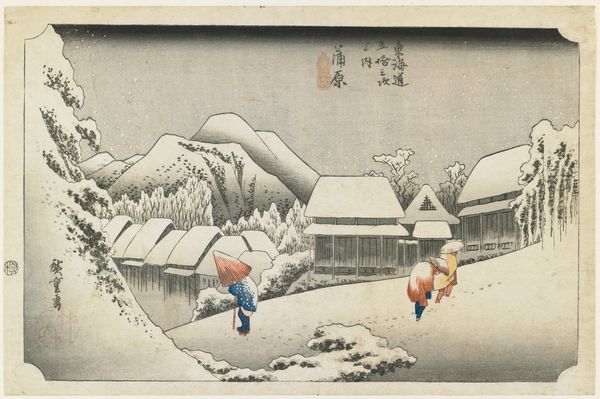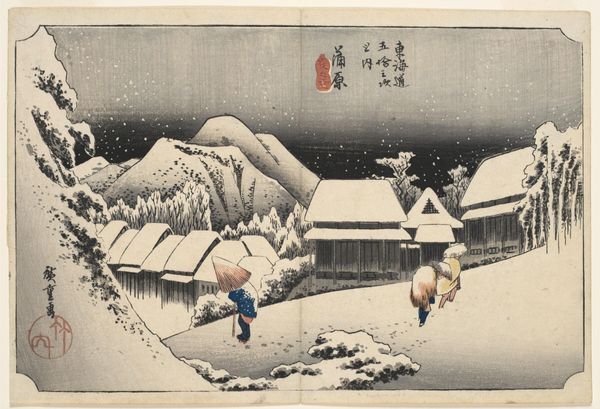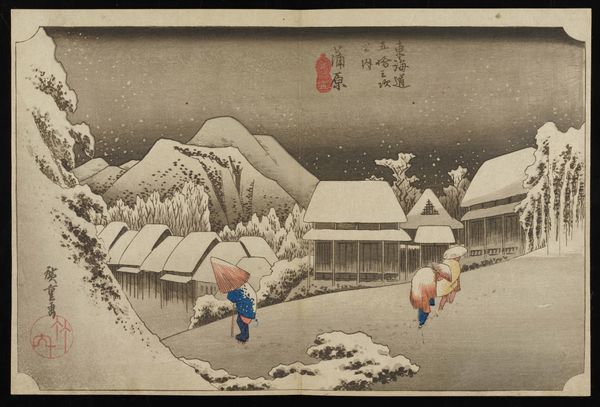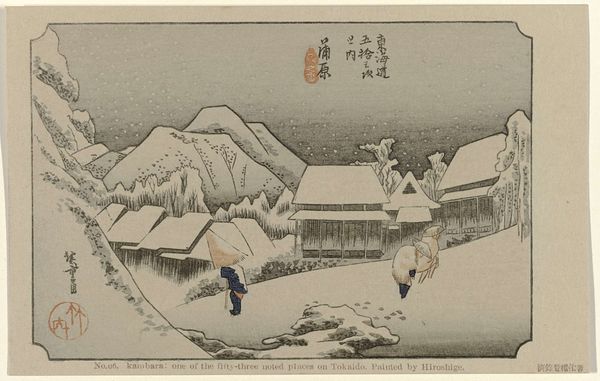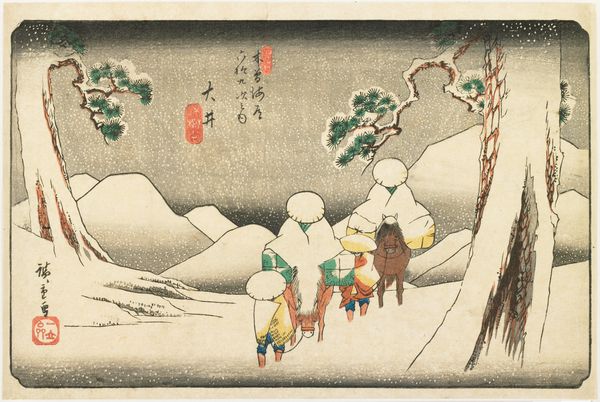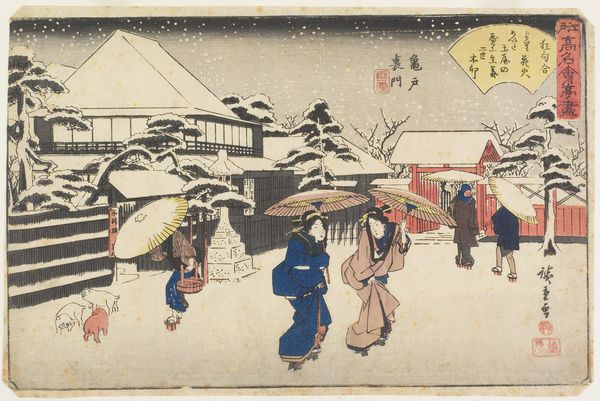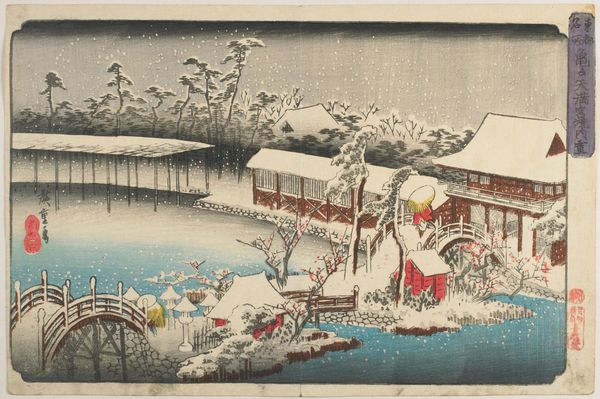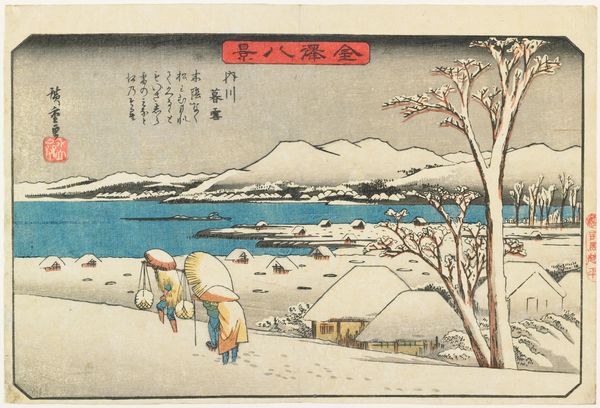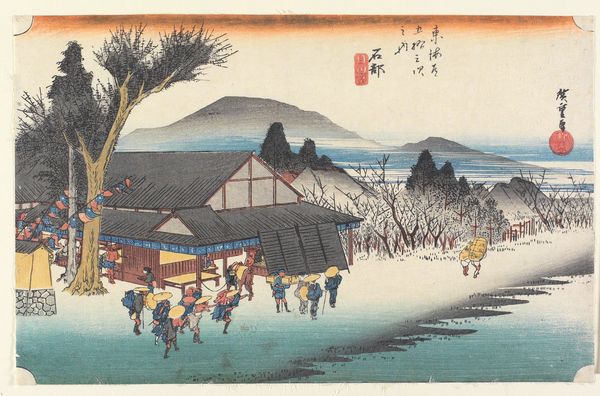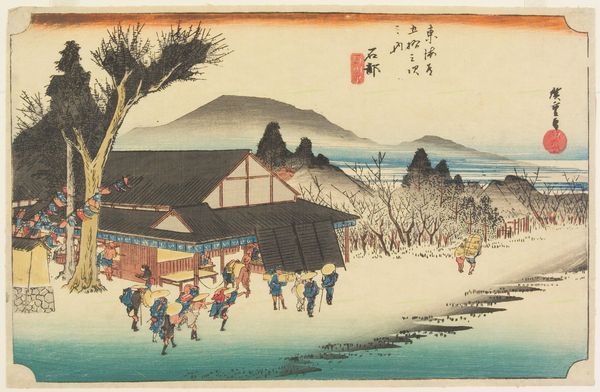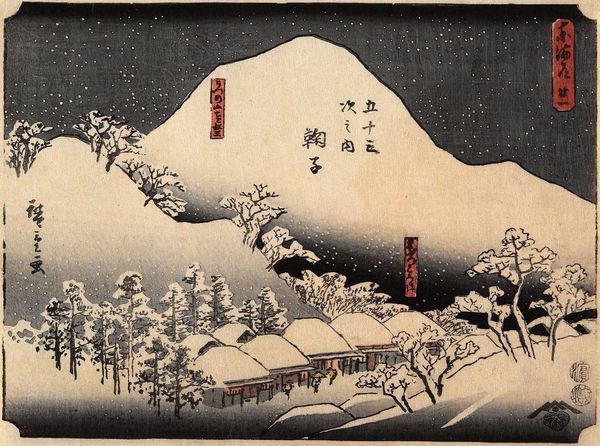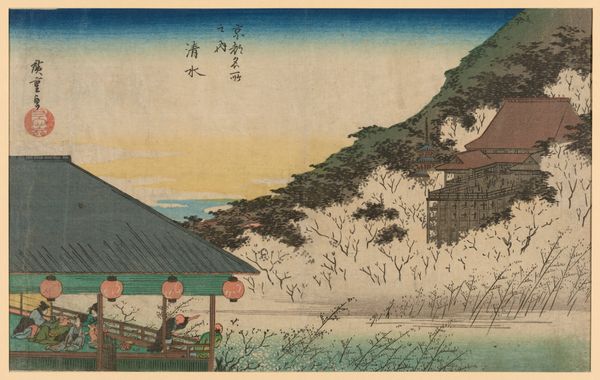![Kanbara- Night Snow [second state] by Utagawa Hiroshige](/_next/image?url=https%3A%2F%2Fd2w8kbdekdi1gv.cloudfront.net%2FeyJidWNrZXQiOiAiYXJ0ZXJhLWltYWdlcy1idWNrZXQiLCAia2V5IjogImFydHdvcmtzLzY2NzExMTFhLWM1ZDItNGMwNi1iM2EzLTFhNjY1OGQ0MmNhZS82NjcxMTExYS1jNWQyLTRjMDYtYjNhMy0xYTY2NThkNDJjYWVfZnVsbC5qcGciLCAiZWRpdHMiOiB7InJlc2l6ZSI6IHsid2lkdGgiOiAxOTIwLCAiaGVpZ2h0IjogMTkyMCwgImZpdCI6ICJpbnNpZGUifX19&w=3840&q=75)
print, etching, ink, woodblock-print
# print
#
etching
#
landscape
#
ukiyo-e
#
ink
#
woodblock-print
#
orientalism
Dimensions: 8 7/8 × 13 7/8 in. (22.5 × 35.3 cm) (image, horizontal ōban)
Copyright: Public Domain
Editor: Here we have Hiroshige’s "Kanbara- Night Snow", created around 1832. It's a woodblock print, mostly shades of grey and white, with a couple of figures trudging through the snow. It's beautifully bleak. What do you see in this piece? Curator: I see more than just a landscape, I see a potent commentary on human resilience amidst harsh realities. The two figures, rendered small against the vast, unforgiving winter scene, immediately evoke questions about their journey, their socio-economic status, and their relationship to the land. Considering Hiroshige’s own travels and his keen observations of everyday life, do you think he was making a broader statement about the plight of ordinary people during the Edo period? Editor: That's a fascinating point! I hadn't really thought about it beyond the aesthetic, but I suppose it does imply a kind of struggle, especially considering the time it was made. Curator: Absolutely. Consider how landscape art, especially during this period, could often be subtly imbued with political and social critiques. Hiroshige, while celebrated for his beauty, wasn’t necessarily blind to the inequalities and hardships of the society around him. The near-monochromatic palette also directs our gaze. Is it possible this stylistic choice reflects a kind of muted existence? Perhaps emphasizing the socio-political oppression that marked much of Edo society? Editor: So you are suggesting that it is an orientalist artwork embedded with social activism. Do you really believe that there's a conversation happening with the viewer about race, identity, and marginalization, through such visual art? Curator: I absolutely do. Great art speaks to us across temporal boundaries. In our current society we strive to challenge structures of oppression that impact people based on their religion, race, class, or gender. While separated from Hiroshige by two centuries, and cultural and socio-political views, "Kanbara- Night Snow" depicts those universal emotions of loneliness, power, strength, vulnerability, that resonates deeply with the vulnerable members of our global society. Editor: Wow, I’ll definitely look at it differently now. Thanks! Curator: My pleasure! It's through these dialogues that we begin to see how art, even something as seemingly simple as a snowy landscape, can reflect and comment on the complexities of human existence across time.
